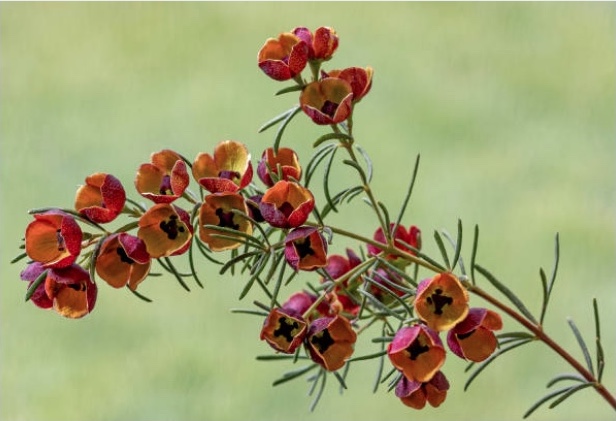Balsam A Balsam is a natural raw material exuded from a tree or plant; the balsam may be either a physiological or a pathological product of the plant. (Stefan Arctander) |
Balsamicrefers to sweet, warm, woody, rich notes such as tolu balsam and benzoin |
Base Notesnotes within a perfume composition which are more tenacious and long-lasting; the last notes detected in the dry down of a perfume composition |
Bee goo It is the term used to designate the rests of bad wax, cells, polen, propolis, pieces of bees that remain from taking the wax of a bee hive, macerated in alcohol. Macerations from 8 months old on are considered to be good fixative. |
BergamotBergamot cold-pressed citrus bergamia |
Bitter orangeBitter orange cold-pressed citrus aurantium |
Bodya well-rounded composition |
Boronia
For perfumery the flowers are collected and then extracted using solvents to produce a concrete. The concrete is further extracted with alcohol to produce boronia absolute. The absolute is semi-liquid and normally dark green and has a fruity tea like odor. In natural perfumery boronia is used with mimosa, violet and honeysuckle base formulations. |
Bottom Notesnotes within a perfume composition which are more tenacious and long-lasting; the last notes detected in the dry down of a perfume composition |
Bouquetrefers to a blend of flower essences; used more often in pre-modern perfumery to describe rich floral compositions |
 Boronia grows or originates almost exclusively from Australia. There are around 95 species of boronia. The most fragrant boronia is the Boronia megastigma. It is often used in flower arrangements because of it's very intense perfume. The leaves of the boronia megastigma are also fragrant. The flowers are brown and cup shaped with yellow inside.
Boronia grows or originates almost exclusively from Australia. There are around 95 species of boronia. The most fragrant boronia is the Boronia megastigma. It is often used in flower arrangements because of it's very intense perfume. The leaves of the boronia megastigma are also fragrant. The flowers are brown and cup shaped with yellow inside.